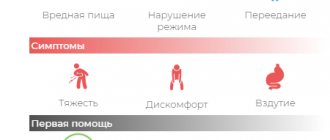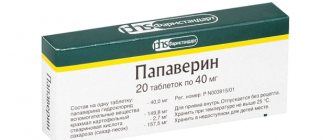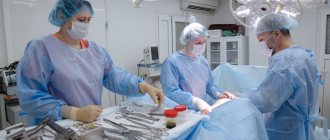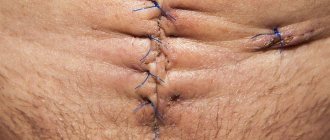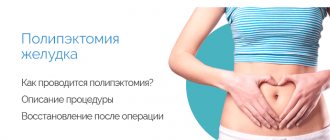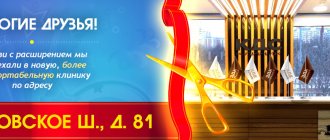Stomach pain after eating has bothered every adult at least once in their life. Stomach pain, or gastralgia, can be acute, aching, constant or paroxysmal, often accompanied by a feeling of heaviness, belching and heartburn. Painful sensations can signal problems with the gastrointestinal tract and other organs, or can be a consequence of stress or banal overeating.
Together with our experts, we found out what causes stomach pain after eating, what diagnostic and treatment methods can be used for such symptoms, and what preventive measures will help prevent gastralgia.
Causes of stomach pain after eating
Stomach pain is usually referred to as discomfort in the epigastric region, the “triangle” between the lower ribs and the solar plexus. Sometimes the pain is localized not only in this area, but also affects the area of the left and right hypochondrium.
Stomach pain after eating can be associated with functional disorders and organic disorders. Functional pain occurs when overeating, stress and consumption of foods that irritate the gastrointestinal tract. Functional disorders can go away on their own if the provoking factor is eliminated. Pain due to organic disorders requires diagnosis and timely therapy to prevent the development of complications and progression of the disease.
Most often, stomach pain after eating is observed with diseases and conditions such as:
- gastritis;
- gastroesophageal reflux;
- stomach and duodenal ulcers;
- pancreatitis;
- cholelithiasis;
- celiac disease or gluten intolerance
- lactose intolerance.
Photo: Shutterstock
Depending on the cause, form and stage of the disease, stomach pain after eating occurs immediately or after some time, varies in intensity, and bothers the person regularly or periodically.
Gastritis
Inflammation of the gastric mucosa is caused by dietary errors, the bacterium Helicobacter Pylori, autoimmune diseases and viral infections. In the early stages, the disease is often asymptomatic. Painful sensations occur when the sensitivity and motility of the stomach are impaired due to the inflammatory process. Gastritis pain usually appears a few minutes after eating and is localized in the epigastric region1,2. In addition to pain, patients with gastritis are bothered by a feeling of pressure and heaviness in the stomach after eating any amount of food.
It is important to know
Gastritis of the stomach: can it develop due to poor nutrition?
Gastroesophageal reflux
Gastroesophageal reflux disease (GERD) occurs when the esophageal sphincter, a ring of muscle that sits between the esophagus and stomach, stops working properly. In this case, the acidic contents of the stomach are partially returned to the esophagus. This condition is accompanied by a burning sensation in the pit of the stomach, pain behind the sternum and in the epigastric region, a feeling of heaviness in the stomach, acidity and bitterness in the mouth.
Peptic ulcer
Chronic inflammation of the gastric and duodenal mucosa with the formation of ulcers is a dangerous recurrent disease. With a peptic ulcer, stomach pain is observed at different times: at night, immediately after eating or 2-3 hours later. The so-called “hunger pains” occur on an empty stomach and disappear after eating. The pain is often intense and can radiate to the left side of the chest and shoulder blade. Often the pain is accompanied by belching and nausea.
Gluten intolerance, or celiac disease
In this autoimmune disorder, the human body does not digest gluten, a plant protein found in wheat, rye and barley grains. When gluten enters the body, stomach pain and indigestion occur. People with celiac disease often complain of fatigue, anemia, and weight loss.
Excessive consumption of fatty and fried foods can cause stomach pain. Photo: Pixabay
Cholelithiasis
The formation of gallstones can cause attacks of biliary colic. During attacks, pain occurs in the epigastric region and right hypochondrium, sometimes radiating under the right shoulder blade and between the shoulder blades. Attacks often begin at night and last from several minutes to several hours. Long lasting attacks (more than 6 hours) indicate the development of complications: acute cholecystitis or pancreatitis.
Pancreatitis
Severe, persistent pain in the upper abdomen may be a sign of pancreatitis, an inflammation of the pancreas. With pancreatitis, the pain often becomes encircling, that is, it also affects the back area. Painful sensations are usually accompanied by bloating, nausea and vomiting.
Lactose intolerance
People with lactose intolerance experience discomfort when consuming any products that contain milk derivatives. This can be cheese, cottage cheese, ice cream, sour cream, chocolate, sweets, instant cereals and much more. The most common symptoms of lactose intolerance are flatulence, cramps, diarrhea and stomach pain.
Decreased concentration of digestive enzymes
Lactase is an enzyme that digests dairy products. If there is a deficiency, there is a large load on the digestive tract when consuming milk and other products. Protein deficiency leads to the accumulation of milk sugar, which is not digested in the gastrointestinal tract. The pathology is characterized by the following features:
- diagnostics in children under 1 year of age;
- Over time, the condition is eliminated, the digestion process is normalized;
- the main reason is related to the immaturity of the infant’s gastrointestinal tract.
It is extremely rare that lactase deficiency persists into adulthood. Then this condition can be attributed not to physiological processes, but to pathology. It's called malabsorption syndrome. Pathology leads to deterioration of absorption and assimilation of various types of nutrients. For example, vitamins, microelements, minerals, proteins, carbohydrates, fats.
The pathology is manifested by the following symptoms:
- abdominal pain;
- increased gas formation, accompanied by bloating;
- release of a large volume of gases, leading to pain relief;
- underweight, pale skin due to lack of nutrients;
- anemia develops less frequently.
If a child still has lactase deficiency, but there is no treatment, complications develop. A deficiency of nutrients leads to anemia, osteoporosis, muscle atrophy, myopia, and endocrine diseases. Many children suffer from vitamin D deficiency, which leads to the development of rickets and developmental delays. Therefore, gastroenterologists do not recommend ignoring the first signs of the disease in order to undergo timely diagnosis and begin treatment.
Treatment for stomach pain after eating
Conservative treatment of stomach pain after eating is usually carried out by therapists or specialists - gastroenterologists who specialize in the treatment of diseases of the gastrointestinal tract. Surgery is performed by surgeons. Sometimes stomach pains are not associated with gastrointestinal pathologies and are a sign of cardiac diseases and endocrine disorders. In this case, therapy is prescribed by an endocrinologist or cardiologist.
Diagnostics
Any treatment begins with diagnosis. The doctor listens to complaints, examines the patient, palpates the abdominal cavity and draws up an examination plan. Sometimes a preliminary diagnosis can be made after studying the symptoms. For example, with ulcerative lesions of the cardial and subcardial part of the stomach, patients complain of pain immediately after eating, and with ulcers of the body of the stomach - 30–60 minutes after eating.
Food poisoning
The localization and distribution of pain syndrome is also determined. For example, if it is located near the right hypochondrium, the problem is inflammation of the liver. If there is pain immediately after eating, the doctor will look for a digestive system disorder. To determine the exact cause of the symptoms, contact a gastroenterologist. He conducts a series of studies and reveals an accurate diagnosis.
More often, pain after eating food is associated with poisoning from low-quality products. Pain syndrome is characterized by the following properties:
- discomfort occurs 15-20 minutes after eating;
- localization of pain in the epigastrium.
Discomfort occurs due to the large amount of protein contained. This is a natural protein found in meat, fish, dairy products, and eggs. If a person has consumed the following foods, a doctor may suspect poisoning:
- canned foods;
- expired food;
- any type of food sold on the street, produced in unsuitable conditions;
- smoked food products;
- sweets with a sour smell;
- darkened, weathered meat.
Patients describe their sensations as follows:
- sharp, sudden pain;
- localization in the lower abdomen, in the middle;
- irradiation into the abdominal cavity;
- increased discomfort in the navel area;
- paroxysmal character caused by the development of periodic spasms.
When poisoning occurs, intoxication occurs, so the patient develops malaise, chills, and elevated body temperature. Within 30 minutes after eating low-quality food, nausea and vomiting develop. With its help, the body tries to get rid of intoxication products. Therefore, vomiting can be repeated.
One of the characteristic signs of poisoning is diarrhea, characterized by the following features:
- the stool has a liquid consistency;
- fetid, unpleasant, putrid odor;
- presence of foam;
- partial change in color to green, yellow, black due to the proliferation of pathogenic microflora.
You can usually treat poisoning yourself at home. But if the patient’s health continues to deteriorate, it is better to seek medical help.
If the poisoning is caused by a severe bacterial infection, the patient is admitted to the hospital. It is necessary to prevent dehydration that occurs due to repeated vomiting and diarrhea. The doctor will be able to restore fluid volume and prevent death.
In case of poisoning, the following treatment methods are recommended:
- a large volume of fluid consumed, into which it is recommended to pour a rehydration solution (Regidron);
- sorbents for binding and removing intoxication products from the digestive tract before absorption into the systemic bloodstream (Polysorb, Enterosgel).
If all treatment methods are chosen correctly, the patient should feel better on the same day.
Preventing stomach pain after eating at home
A normal daily routine, proper nutrition and giving up bad habits are the most effective measures to prevent stomach pain after eating. Doctors advise avoiding fatty, fried and spicy foods or consuming them in small quantities. Meals should be balanced in the content of proteins, fats and carbohydrates and must be regular, without long intervals between meals. If you have chronic diseases, it is recommended to follow a diet.
It is important to know
Pancreatitis of the pancreas: what foods are generally prohibited?
Popular questions and answers
Stomach pain after eating is a sign of many diseases. However, many ignore unpleasant symptoms or limit themselves to taking medications without consulting a doctor. We asked experts how dangerous stomach pain can be, when you need to see a doctor, and what remedies can help relieve the condition at home.
When can stomach pain after eating be dangerous?
Stomach pain that occurs against the background of acute cholecystitis, acute pancreatitis, ulcerative bleeding or ulcer perforation is considered dangerous. These conditions require emergency medical attention, including surgery.
When to see a doctor if you have stomach pain after eating?
Always, if attacks recur more or less regularly. Urgent help is required if the pain does not go away within several hours or intensifies, accompanied by nausea, vomiting, and fever.
How can you relieve stomach pain after eating?
If the pain is caused by increased acidity of the gastric juice, an antacid drug or a regular soda solution can help - 1 teaspoon of soda per glass of water. Antispasmodics and proton pump inhibitors can be used to relieve pain. If the condition has not improved after 2-3 hours, you should urgently seek medical help. Painkillers (analgesics) should not be used, as they distort the symptoms and prevent an accurate diagnosis.
Is it possible to get rid of stomach pain after eating using folk remedies?
Sometimes you can. For this purpose, decoctions and infusions of medicinal plants are suitable, which have an antispasmodic and calming effect. You can prepare and drink an infusion of chamomile, mint or ginger.
Sources
- Chronic gastritis: clinical options and treatment. S. S. Vyalov. Federal State Autonomous Educational Institution of Higher Education Peoples' Friendship University of Russia. https://www.consilium.orscience.ru/upload/iblock/9c0/ 9c09f83310f095a96843efacae2d3fa7.pdf
- National recommendations for the diagnosis and treatment of acid-dependent and HELICOBACTER PYLORI-associated diseases. Russian Scientific Society of Therapists. Scientific Society of Gastroenterologists of Russia.
- Clinical recommendations. Peptic ulcer disease. Russian Gastroenterological Association. Russian Endoscopic Society.
- Recommendations of the Russian Gastroenterological Association for the diagnosis and treatment of cholelithiasis.
Pain after dinner
If pain develops only after dinner, the reason may be an increased load on the gallbladder, which is in a state of inflammation. More often it develops due to the formation of cholelithiasis. The following signs are characteristic:
- increased discomfort 4 hours after eating;
- persistence of pain during sleep;
- in the acute period, the patient experiences nausea, vomiting, bad breath, and low-grade fever;
- in the chronic course, pallor of the mucous membranes and skin is observed.
Soreness manifests itself as follows:
- initial localization under the right rib;
- irradiation under the scapula, collarbone;
- increased discomfort due to consumption of spicy, fatty, fried, smoked foods.
If a chronic course is observed, treatment is carried out at home. If the pathology worsens, hospitalization will be required. The attack can be stopped with the help of antispasmodics, but additional conservative therapy is required to prevent relapse.
To completely eliminate the disease, surgery is used. A cholecystectomy operation is prescribed, during which the gallbladder is removed.

